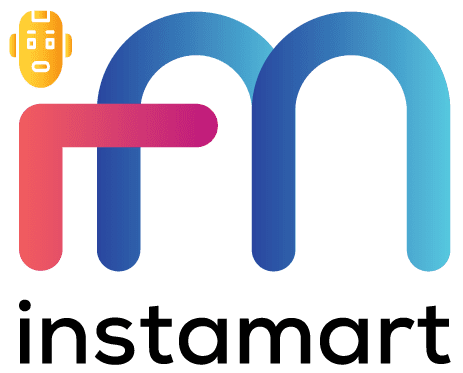Traditional approaches to data governance have largely failed to meet the desired performance objectives due to the changing digital environment. Enterprise data governance refers to the policies and standards that guide how businesses create, implement and adopt all aspects of the available data asset. A survey shows that out of 61% executives who intend to optimize data, only 42% believe they are on the right track. With the dynamic nature of the market, data governance and management is the discipline that stands in the gap for cost reduction, risk management, and maximizing value. In this article we explore the concept of enterprise data governance, its importance, and best practices.
Enterprise data governance and why does it matter?
We define enterprise data governance as the policies and standards that guide how businesses create, implement and adopt all aspects of the available data asset. Organizations rely on data for decision-making. To ensure compliance and the realization of the business objectives, executives are obliged to implement and enforce procedures to govern the data assets. So, when you’re seeking to know why enterprise data governance matter, you should consider various factors as follows:
Difficulties in collaboration between departments: Enterprise data governance matters because it enables you to break down the barriers between departments in regards to use of data.
Policy gaps: Data policies are a valuable aspect in ensuring accountability on how enterprises use and manage data. It is the basis of determining roles and responsibilities for those charged with data management. Therefore, data governance is vital in determining the policies to guide behavior around data assets.
Organizing and aligning terms: Without proper data governance in place, business data remains disorganized. Additionally, the use of terms will not be consistent throughout the organization’s departments unless the executive implement data governance and management.
Therefore, data governance goes beyond data management to put the right information in the hands of the right people within your organization.
With these insights, now let’s seek to answer the question why you need enterprise data governance…
The need for Data Governance
For executives to build a data driven culture, they need solid reasons for doing so. Enterprise data governance ensures that externally and internally available data are used for critical business processes.
So, let’s unpack some 5 reasons why you need enterprise data governance
To build a shared understanding of data
Getting team mates and departments into a uniform understanding is an important aspect in driving strategic decisions. Without enterprise data governance, the users cannot effectively access and develop the required insights from the data. For example, data governance enables you to define terminologies and establish roles for each stakeholder.
To comply with the laws and regulations on data privacy
Governance laws and regulations are constantly changing. Enterprise data governance is the only way through which organization can remain compliant in fulfilling the standards. Compliance is an important part of the requirements to secure data ecosystem. Organizations are obliged to understand the legal measures as a basis for applying the necessary approaches to meet the standards.
To improve collaboration between departments and stakeholders in the organization
Organizational success in using data involves increased visibility and control on information. Through increased collaboration, users of data can enhance collaboration and eliminate data silos within the company. Enterprise data governance and management contributes to improved decisions leading to broader insights into the business operations and prospects.
To enforce rules and policies to eliminate data misuse
Enterprise data governance contributes to increased compliance which is necessary for protecting consumer data. Organizations have sensitive data for employees, customers, and other stakeholders which must be protected. A structured protection through data governance approaches guarantees safety for customer information.
With an understanding of why we need a data governance, let’s look at some of the best practices for enterprise data governance and management:
Best practices for data governance
Enterprise data governance best practices are essential aspects to support the realization of the objectives for governance. A survey by Gartner Data and Analytics showed that 61% of the respondents expressed the desire to optimize the use of data. However, only 41% of the businesses were on track with the implementation of data governance. It shows that most companies get the reason to implement data governance but fail to embrace the best practices.
Here are the 5 best practices for implementing enterprise data governance and management.
Be guided with a clear purpose
Enterprise data governance is about three factors that are people, process, and technology. The best practice is to have a purpose that encompass these three aspects. Once, you have the right focus, develop a simpler approach to implement enterprise data governance. Systems that are simpler also enables you to manage the processes with ease.
Focus on a long-term data culture change
Enterprise data governance is equated to a marathon. While a data governance project will last 3 months or less, the implementation is a long-term investment. You need to prepare for several milestones – some running into years! The same way business needs change over time so is data. Making data governance part of the long terms culture change will benefit the business by changing how employees think about it in everyday roles.
Ensure collaboration among users
Enterprise data governance is about ensuring clarity in terms of goals, processes, and permission to access data. Effective collaboration is a key principle in data governance to enhance flexibility and smooth running of the businesses. As a result, all teams responsible for data should take part in data governance initiatives.
Embrace a top-bottom approach
Data governance is about people and processes. You need a buy-in from the executive as well as an understanding among the individuals within the organization on what is required. A top-bottom approach is to ensure that the data is ultimately used to drive organization forward.
Practice effective Communication
Enterprise data governance and management requires a joint effort from the organization’s stakeholders especially users and decision makers. Without effective communication, data users cannot:
- Celebrate early wins
- Take part in highlighting the program impacts and;
- Acknowledge setbacks for improvements which are important in building a culture that support effective governance.
As pointed out, data driven businesses are poised for exponential growth with the governance market projected to reach USD 5.28 billion by the year 2026. Nonetheless, the variations in business needs necessitate the use of different types of enterprise governance.
What are the roles of data governance?
As pointed out, data governance is a long journey that must start with small steps. One of the small steps in data governance is identifying roles and responsibilities for the enterprise data governance team.
For example, you will need an executive sponsor to ensure there is access to funding, support, and political backing. On the other hand, a data governance council is responsible for strategic guidance in the data governance implementation. It is the data governance council to determine when and what the data governance program should accomplish. Other roles that are necessary to assign when implementing a data governance program include:
- Data stakeholders
- Data stewards
- Data Owners
- Data Custodians
- Data governance Lead
- Enterprise Data Systems Director
- Representatives for Functional Areas
Appointing various people to these roles is an important strategic decision that determines the success of the data governance program. Once you get these basics right, the right persons for the roles will deliver greater value to the business.
Let’s now take a look at the types of enterprise data governance models…
So, what are the three-enterprise data governance model types?
Centralized enterprise data governance refers to the maintenance of master data from a centralized business unit. The centralized model can encompass single or multiple business units. A centralized data governance model has several benefits as follows:
- Increased quality control to support strategic decisions
- Improved focus on delivering essential tasks
- Limited resource use in managing data
Disadvantages
- May result in bureaucracy
- Results in complex data requirements
- Contributes to delays in setting up master data
Decentralized Enterprise Data Governance. In this model, business users or functional areas are charged with the responsibility to create, manage, and distribute data.
The benefits of decentralized enterprise data governance include:
- Shared execution and management of data strategy
- Highly flexible when dealing with the changing business needs
- The data meets quality needs of the users
- Relatively easy to set up
Risks of decentralized enterprise data governance
- Susceptible to duplicate master data
- Results in difficulties in detecting inconsistencies in the data
- Limits the ability conduct periodic audits and other enterprise data governance roles
Hybrid Enterprise Data Governance. This is also referred to as federated model. It allows the functional units to own data and metadata while operating autonomously. They can develop procedures, policies, and standards that are suitable to the specific business needs.
The benefits of hybrid model of enterprise data governance include:
- Ability to scale data without effects on other teams
- Faster resolution of any emerging issues
- Functional units enjoy high flexibility and agility
Risks
- Complex to implement
- Require high levels of expertise to implement
- Difficulties in coordination among teams within the organization
Data governance framework. Executives rely on data to make strategic decisions. However, only 3% of data meets the desired quality standards. Enterprise data governance set-up and management definition involve Five pillars including:
- Reporting data architecture
- Reporting of quality data
- KPIs Reports
- Security and Access Control
- Data-Driven Culture
These are the bases of the data governance framework that guarantees consistency and trustworthiness within your organization. There is an increased need for organizations to meet new privacy regulations.
Therefore, data governance set-up and management have become critical components in realizing effective data management strategies. To achieve this, you need the right data governance tools to automate the management of the data governance program.
Data governance tools
Enterprise data governance tools refers to the software that businesses use to manage data governance programs. These data governance tools are valuable in ensuring proper use of data as well as deriving the business value. There are multiple tools for data governance. Their application may vary from business to business due to preference and needs. Here is a list of some of the high rating data governance tools:
- Oracle Enterprise Metadata Management
- Alation Data Governance App
- Informatica Axon
- SAP Data Hub
- SAS Data Management
- Data360 Govern
- Collibra Governance
- Microsoft Purview
- Collibra Lineage
- Ataccama One
In Sum…
Data governance is a massive undertaking you don’t want to leave in unsafe hands. The struggle to effectively scale data governance is real among organizations. Unfortunately, many businesses fail to derive value from their data for years. A survey showed that 80% of organizations that seek to scale their data governance will fail.
As highlighted, data governance set-up and management have become critical components in realizing effective data management strategies. To achieve this, you need the right data governance tools to automate the management of the data governance program.
Our data governance setup approach involves understanding the pain points and wishes of the data user community. Further, we set-up a data governance stakeholder and user community, and identify the primary subject areas to build a reporting model.
Decades of experience at Instamart.ai have enabled us to support businesses in benefiting from enterprise data governance. The results of our work include reduced cost of managing data, increased access, and improved quality of data.
So, we provide services in establishing a centralized data governance and reporting platform that guarantees trust for the business user community.







For the reason that the admin of this site is working, no uncertainty very quickly it will be renowned, due to its quality contents.
Yeah bookmaking this wasn’t a risky decision outstanding post!.